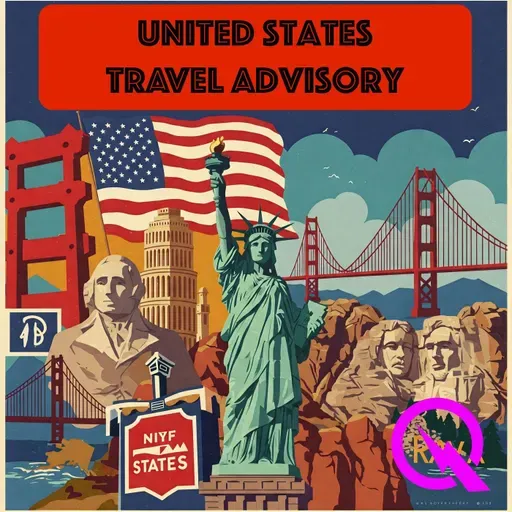
08 October 2025
US Government Shutdown Impacts Travel: What Visitors Need to Know About Airport Delays, Park Closures, and Essential Services
United States Travel Advisory
About
Listeners planning travel to the United States should be aware that a government shutdown began on October 1, 2025, after U.S. lawmakers failed to pass new funding legislation. As a result, many federal agencies are either operating at reduced capacity or have suspended certain services. According to information from Smartraveller, this shutdown has caused noticeable disruptions for travelers, particularly at airports and ports of entry, where longer wait times and delays are expected due to reduced staffing. Even more than 11,000 employees at the Federal Aviation Administration have been furloughed, which could affect flight schedules and airport operations. Travelers should also be prepared for limited access to federally managed facilities like national parks, museums, and monuments, as many of these may be closed for the duration of the shutdown. In addition, some essential services such as passport and visa processing, certain permits, and regulatory inspections may be slowed or temporarily unavailable.
The U.S. Department of State currently places the United States at Level 1: Exercise Normal Precautions, which means there is no elevated national security risk reported at this time, and no recent broad-based advisories have been issued against travel to the country. However, Canada's Government travel site also advises visitors to "take normal security precautions" as of its latest update on October 1, 2025.
Travelers should remain alert to localized events or disruptions. For example, American Airlines and other travel providers have issued alerts concerning rescheduling and flight changes due to government-related delays throughout October. Also, travelers holding insurance or responsible for group tours may find their coverage or plans affected by governmental shutdowns, as some policies contain exclusions for disruptions caused by government interventions.
Those planning a trip to the United States should stay updated through official channels such as the U.S. State Department’s travel advisories and ensure that any travel arrangements are flexible to accommodate possible last-minute changes or unanticipated closures. Checking with airlines for possible changes, allowing extra time during airport transit, and monitoring local news for updates on federal operations can all help ensure a smoother travel experience during this period.
This content was created in partnership and with the help of Artificial Intelligence AI
The U.S. Department of State currently places the United States at Level 1: Exercise Normal Precautions, which means there is no elevated national security risk reported at this time, and no recent broad-based advisories have been issued against travel to the country. However, Canada's Government travel site also advises visitors to "take normal security precautions" as of its latest update on October 1, 2025.
Travelers should remain alert to localized events or disruptions. For example, American Airlines and other travel providers have issued alerts concerning rescheduling and flight changes due to government-related delays throughout October. Also, travelers holding insurance or responsible for group tours may find their coverage or plans affected by governmental shutdowns, as some policies contain exclusions for disruptions caused by government interventions.
Those planning a trip to the United States should stay updated through official channels such as the U.S. State Department’s travel advisories and ensure that any travel arrangements are flexible to accommodate possible last-minute changes or unanticipated closures. Checking with airlines for possible changes, allowing extra time during airport transit, and monitoring local news for updates on federal operations can all help ensure a smoother travel experience during this period.
This content was created in partnership and with the help of Artificial Intelligence AI